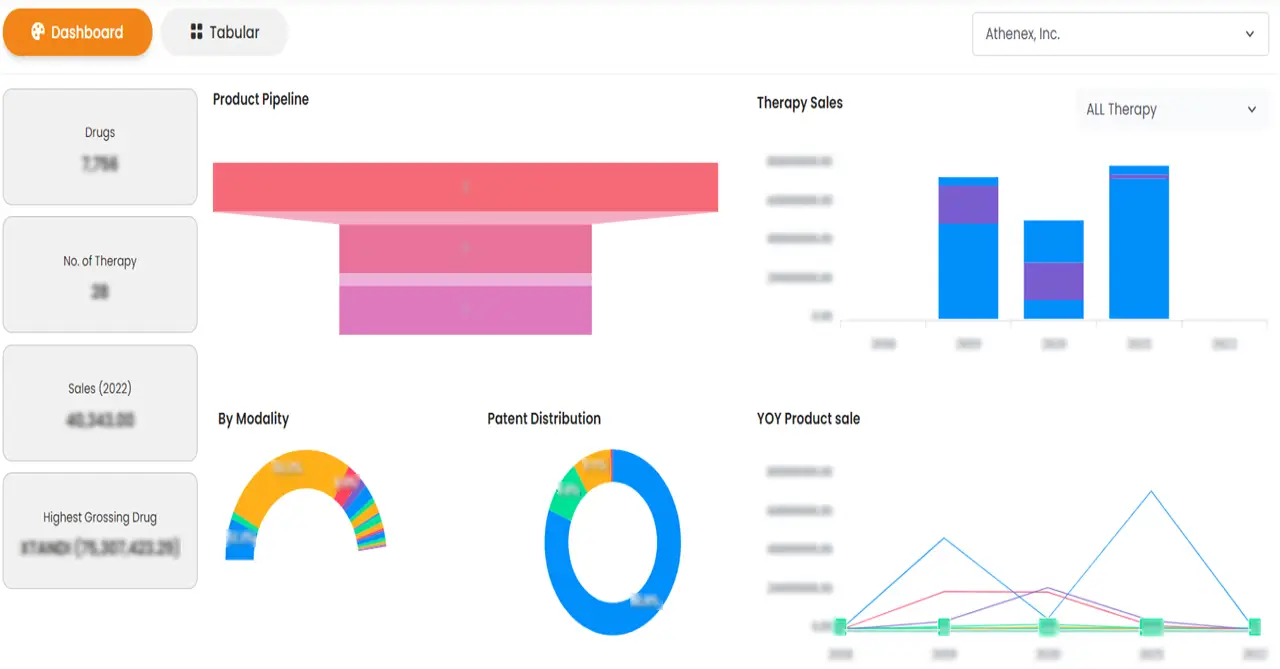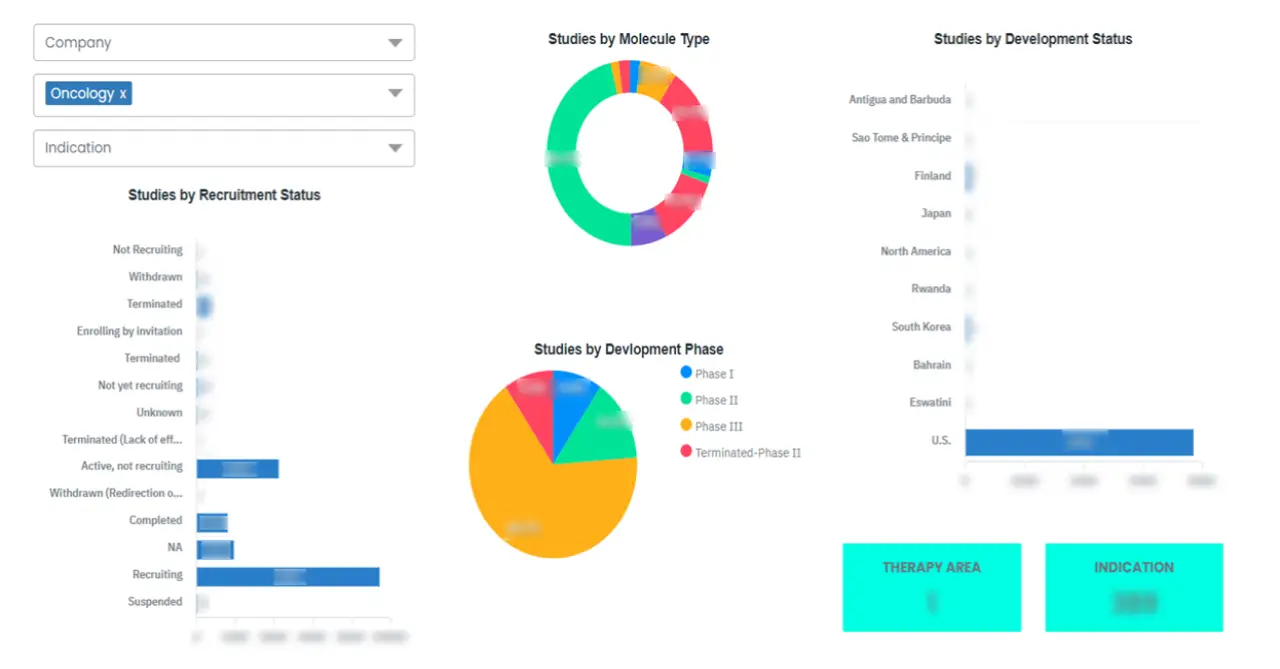世界の後天性免疫不全症候群(エイズ)治療市場の規模、シェア、傾向分析レポート
Market Size in USD Billion
CAGR :
% 
 USD
34.04 Billion
USD
45.88 Billion
2023
2031
USD
34.04 Billion
USD
45.88 Billion
2023
2031
| 2024 –2031 | |
| USD 34.04 Billion | |
| USD 45.88 Billion | |
|
|
|
>世界の後天性免疫不全症候群(AIDS)治療市場のセグメンテーション、タイプ別(HIV-1およびHIV-2)、作用機序別(ヌクレオシド/ヌクレオチド逆転写酵素阻害剤、非ヌクレオシド逆転写酵素阻害剤、プロテアーゼ阻害剤、融合阻害剤、CCR5拮抗薬、インテグラーゼ阻害剤、モノクローナル抗体、その他)、薬剤別(アバカビル、デラビルジン、アタザナビル、エンフビルタイド、マラビロク、ドルテグラビル、イバリズマブ、その他)、投与経路別(経口、静脈内、その他)、流通チャネル別(直接、オンライン薬局、小売業者、その他)、エンドユーザー別(病院、在宅ケア、専門クリニック、その他)– 2031年までの業界動向と予測。
後天性免疫不全症候群(エイズ)治療市場分析
HIVの発生率の上昇と抗レトロウイルス療法(ART)の進歩により、市場は大幅な成長を遂げています。NRTI、NNRTI、インテグラーゼ阻害剤などのこれらの療法は、ウイルスを管理し、患者の健康状態を改善するために不可欠です。最近の進展では、患者により便利な治療オプションを提供し、服薬遵守を強化する、Cabenuvaなどの長時間作用型注射製剤の導入が注目されています。さらに、革新的なワクチンや機能的治療法などの予防戦略に関する継続的な研究が注目を集めています。市場では、特にリソースが限られた環境で手頃な価格の治療へのアクセスを増やし、ケアの範囲を広げる取り組みも見られます。イノベーションとアクセシビリティに重点を置いたエイズ治療市場は、HIV /エイズの影響を受けた人々の生活の質の向上を目指して、継続的な拡大に向けて好位置につけています。
後天性免疫不全症候群(エイズ)治療市場規模
世界の後天性免疫不全症候群(エイズ)治療市場規模は、2023年に340億4,000万米ドルと評価され、2024年から2031年の予測期間中に3.80%のCAGRで成長し、2031年には458億8,000万米ドルに達すると予測されています。市場価値、成長率、セグメンテーション、地理的範囲、主要プレーヤーなどの市場シナリオに関する洞察に加えて、Data Bridge Market Researchがまとめた市場レポートには、詳細な専門家分析、患者の疫学、パイプライン分析、価格分析、規制枠組みも含まれています。
後天性免疫不全症候群(エイズ)治療市場の動向
「長時間作用型注射剤の台頭」
市場では、イノベーションと患者中心のケアへの重点によって推進される変革の傾向が見られます。注目すべき傾向の 1 つは、患者の服薬遵守と利便性を高める長期作用型注射抗レトロウイルス療法の採用が増えていることです。毎月または 2 か月ごとに投与される注射治療である Cabenuva などのイノベーションは、毎日の経口薬の代替手段となり、HIV 感染者の生活の質を大幅に改善します。さらに、有効性を最適化し、耐性の可能性を減らすために、併用療法の進歩が模索されています。市場はまた、遺伝的およびウイルス的特徴に基づいて個々の患者のプロファイルに合わせて治療が調整される個別化医療へと移行しています。ワクチンや機能的治療法などの予防策の研究が進行中であり、エイズ治療の状況は急速に進化しており、健康成果を改善し、最終的には HIV/エイズの世界的負担を軽減することを目指しています。
レポートの範囲と後天性免疫不全症候群(エイズ)治療市場のセグメンテーション
|
属性 |
後天性免疫不全症候群(エイズ)治療の主要市場洞察 |
|
対象セグメント |
|
|
対象国 |
北米では米国、カナダ、メキシコ、ヨーロッパではドイツ、フランス、英国、オランダ、スイス、ベルギー、ロシア、イタリア、スペイン、トルコ、その他のヨーロッパ、ヨーロッパでは中国、日本、インド、韓国、シンガポール、マレーシア、オーストラリア、タイ、インドネシア、フィリピン、アジア太平洋地域 (APAC) ではその他のアジア太平洋地域 (APAC)、中東およびアフリカ (MEA) の一部としてサウジアラビア、UAE、南アフリカ、エジプト、イスラエル、中東およびアフリカ (MEA) の一部としてその他の中東およびアフリカ (MEA)、南米の一部としてブラジル、アルゼンチン、その他の南米 |
|
主要な市場プレーヤー |
アボット(米国)、ギリアド・サイエンシズ(米国)、GSK plc(英国)、ブリストル・マイヤーズ スクイブ(米国)、ビアトリス(米国)、ジョンソン・エンド・ジョンソン・サービス(米国)、メルク(米国)、ベーリンガーインゲルハイム・インターナショナル(ドイツ)、シプラ(インド)、ホロジック(米国)、ファイザー(米国)、ポイントケア(米国)、リガンド・ファーマシューティカルズ(米国)、セントーア・ファーマシューティカルズ(インド)、サンガモ・セラピューティクス(米国)、イノビオ・ファーマシューティカルズ(米国)、トロガルゾ(台湾) |
|
市場機会 |
|
|
付加価値データ情報セット |
Data Bridge Market Research がまとめた市場レポートには、市場価値、成長率、セグメンテーション、地理的範囲、主要プレーヤーなどの市場シナリオに関する洞察に加えて、専門家による詳細な分析、患者の疫学、パイプライン分析、価格分析、規制の枠組みも含まれています。 |
後天性免疫不全症候群(エイズ)治療市場の定義
後天性免疫不全症候群 (AIDS) の治療とは、AIDS につながる HIV 感染の進行を管理および制御することを目的とした医療および介入を指します。この治療では主に抗レトロウイルス療法 (ART) が使用されます。ART は、HIV ウイルスの複製を抑制し、免疫機能を改善し、HIV/AIDS 患者の生活の質を高めるように設計された薬剤の組み合わせで構成されます。AIDS 治療の目標は、ウイルス量を検出できないレベルまで減らすことで、AIDS への進行を防ぎ、他者への感染リスクを減らすことです。治療には、予防措置、日和見感染の管理、免疫健康の定期的なモニタリングも含まれる場合があります。
後天性免疫不全症候群(エイズ)治療市場の動向
ドライバー
- HIV感染率の増加
世界的なHIV感染率の増加は、後天性免疫不全症候群(エイズ)治療市場における治療オプションの強化を必要とする重要な市場推進要因となっています。世界保健機関(WHO)によると、2023年末の時点で約3,990万人がHIVに感染しており、効果的な管理戦略の緊急の必要性が浮き彫りになっています。この感染率の増加は、ウイルスを抑制し、感染者の生活の質を向上させるために不可欠な抗レトロウイルス療法(ART)の開発とアクセスの拡大の重要性を強調しています。さらに、特に脆弱な集団における新規感染の増加は、革新的な治療ソリューションの需要を増大させます。医療システムがこれらの課題に適応するにつれて、新しい治療法の研究開発への投資の増加は、進化するHIV /エイズ管理の状況に効果的に対処するために重要になり、この分野の市場成長を促進します。
- 遠隔医療とデジタルヘルス技術の統合
Innovations in antiretroviral therapy (ART) are significantly enhancing treatment efficacy and patient adherence in managing HIV/AIDS. The development of long-acting injectable formulations, such as Cabenuva, allows patients to receive treatment less frequently—monthly or bimonthly—compared to daily oral medications. This convenience reduces the burden of adherence, particularly for those struggling with daily pill regimens. Additionally, combination therapies that integrate multiple classes of antiretroviral agents streamline treatment regimens, minimize the risk of drug resistance, and improve overall effectiveness. These advancements lead to better viral suppression and enhance patients' quality of life by providing more manageable treatment options, ultimately driving better health outcomes in the HIV-positive population.
Opportunities
- Development of Novel Antiretroviral Therapies
The development of novel antiretroviral therapies is a pivotal factor in expanding the Acquired Immunodeficiency Syndrome (AIDS) treatment market. Innovations such as long-acting injectables provide patients with a more convenient alternative to daily oral medications, allowing treatment administration on a monthly or bimonthly basis. This approach significantly enhances treatment adherence, particularly among individuals who find daily pills challenging to manage. Additionally, advancements in gene therapies aim to provide more effective and durable solutions for HIV management, potentially offering a functional cure for some patients. By attracting new patient populations and improving overall treatment experiences, these cutting-edge therapies are instrumental in creating opportunities for market growth and transforming HIV care.
- Rise of Telehealth Services
The rise of telehealth services is revolutionizing the management of HIV/AIDS by enhancing patient monitoring and engagement. With telehealth, healthcare providers can offer remote consultations, allowing patients to receive care from the comfort of their homes. This accessibility is particularly beneficial for individuals in rural or underserved areas who may face barriers in accessing traditional healthcare facilities. Telehealth also facilitates continuous patient engagement through regular virtual check-ins, medication reminders, and support for adherence to treatment regimens. Additionally, these services enable healthcare providers to closely monitor patient progress and adjust treatment plans in real time, ensuring optimal care. As a result, telehealth is improving patient outcomes and expanding the reach of healthcare services in the AIDS treatment market.
Restraints/Challenges
- Societal Stigma in HIV/AIDS Treatment
Societal stigma surrounding HIV/AIDS presents a significant challenge in the Acquired Immunodeficiency Syndrome (AIDS) treatment market, deterring individuals from seeking testing and treatment. Negative perceptions and discrimination can lead to feelings of shame and fear, causing many to avoid healthcare services. This reluctance often results in late diagnoses, where individuals may only seek medical help when their health has significantly deteriorated, leading to poorer health outcomes and increased transmission rates. Furthermore, stigma can extend to healthcare providers, who may unconsciously harbor biases that impact the quality of care offered to patients with HIV/AIDS.
- High Treatment Costs
The cost of antiretroviral therapy (ART) poses a significant challenge in the fight against HIV/AIDS, particularly for patients lacking adequate insurance coverage. While ART is crucial for managing the virus and preventing disease progression, its high cost can be a major barrier, especially for those in low-income communities or countries with limited healthcare resources. For many individuals, the financial burden of continuous treatment can lead to difficult choices between healthcare and other essential needs, such as housing or food. This limitation on access to essential treatments affects individual health outcomes and exacerbates public health issues, increasing the risk of virus transmission within communities.
This market report provides details of new recent developments, trade regulations, import-export analysis, production analysis, value chain optimization, market share, impact of domestic and localized market players, analyses opportunities in terms of emerging revenue pockets, changes in market regulations, strategic market growth analysis, market size, category market growths, application niches and dominance, product approvals, product launches, geographic expansions, technological innovations in the market. To gain more info on the market contact Data Bridge Market Research for an Analyst Brief, our team will help you take an informed market decision to achieve market growth.
Acquired Immunodeficiency Syndrome (AIDS) Treatment Market Scope
The market is segmented on the basis of type, mechanism of action, drugs, route of administration, distribution channel, and end-users. The growth amongst these segments will help you analyse meagre growth segments in the industries and provide the users with a valuable market overview and market insights to help them make strategic decisions for identifying core market applications.
Types
- HIV-1
- HIV-2
Mechanism of Action
- Nucleoside/Nucleotide Reverse Transcriptase Inhibitors
- Non-Nucleoside Reverse Transcriptase Inhibitors
- Protease Inhibitors
- Fusion Inhibitors
- CCR5 Antagonist
- Integrase Inhibitors
- Monoclonal Antibody
- Others
Drugs
- Abacavir
- Delavirdine
- Atazanavir
- Enfuvirtide
- Maraviroc
- Dolutegravir
- Ibalizumab
- Others
Route of Administration
- Oral
- Intravenous
- Others
Distribution Channel
- Direct
- Online Pharmacy
- Retailers
- Others
End-Users
- Hospitals
- Homecare
- Specialty Clinics
- Others
Acquired Immunodeficiency Syndrome (AIDS) Treatment Market Regional Analysis
The market is analysed and market size insights and trends are provided by country, type, mechanism of action, drugs, route of administration, distribution channel, and end-users as referenced above.
The countries covered in the market report are U.S., Canada and Mexico in North America, Germany, France, U.K., Netherlands, Switzerland, Belgium, Russia, Italy, Spain, Turkey, Rest of Europe in Europe, China, Japan, India, South Korea, Singapore, Malaysia, Australia, Thailand, Indonesia, Philippines, Rest of Asia-Pacific (APAC) in the Asia-Pacific (APAC), Saudi Arabia, U.A.E., South Africa, Egypt, Israel, Rest of Middle East and Africa (MEA) as a part of Middle East and Africa (MEA), Brazil, Argentina and Rest of South America as part of South America.
Asia-Pacific region leads the acquired immunodeficiency syndrome (AIDS) treatment market, primarily due to its vast population and increasing prevalence of HIV. This demographic trend creates a substantial demand for effective treatment options and healthcare services. Furthermore, rising awareness and initiatives to combat HIV/AIDS contribute to the region's market dominance. As healthcare infrastructure improves, the ability to address the needs of those affected by the virus continues to strengthen in this dynamic market.
North America is anticipated to experience growth in the acquired immunodeficiency syndrome (AIDS) treatment market, driven by the presence of prominent industry players. The region's substantial healthcare expenditure further supports advancements in treatment options and technologies. Additionally, a well-established healthcare infrastructure facilitates the delivery of high-quality services to patients. These factors collectively contribute to North America's robust position in the AIDS treatment market during the forecast period.
The country section of the report also provides individual market impacting factors and changes in regulation in the market domestically that impacts the current and future trends of the market. Data points such as down-stream and upstream value chain analysis, technical trends and porter's five forces analysis, case studies are some of the pointers used to forecast the market scenario for individual countries. Also, the presence and availability of global brands and their challenges faced due to large or scarce competition from local and domestic brands, impact of domestic tariffs and trade routes are considered while providing forecast analysis of the country data.
Acquired Immunodeficiency Syndrome (AIDS) Treatment Market Share
The market competitive landscape provides details by competitor. Details included are company overview, company financials, revenue generated, market potential, investment in research and development, new market initiatives, global presence, production sites and facilities, production capacities, company strengths and weaknesses, product launch, product width and breadth, application dominance. The above data points provided are only related to the companies' focus related to market.
Acquired Immunodeficiency Syndrome (AIDS) Treatment Market Leaders Operating in the Market Are:
- Abbott (U.S.)
- Gilead Sciences, Inc. (U.S.)
- GSK plc (U.K.)
- Bristol-Myers Squibb Company (U.S.)
- Viatris Inc. (U.S.)
- Johnson & Johnson Services, Inc. (U.S.)
- Merck & Co., Inc. (U.S.)
- Boehringer Ingelheim International GmbH (Germany)
- Cipla (India)
- Hologic, Inc. (U.S.)
- Pfizer Inc. (U.S.)
- PointCare (U.S.)
- Ligand Pharmaceuticals Incorporated (U.S.)
- Centaur Pharmaceuticals (India)
- Sangamo Therapeutics (U.S.)
- INOVIO Pharmaceuticals (U.S.)
- Trogarzo (Taiwan)
Latest Developments in Acquired Immunodeficiency Syndrome (AIDS) Treatment Market
- In 2021, the Food and Drug Administration (FDA) granted approval for cabotegravir and rilpivirine as a new antiretroviral therapy (ART) regimen for individuals with a proven history of viral suppression. This innovative treatment offers an alternative for patients who have effectively managed their HIV, allowing for less frequent dosing options. The combination of these two medications aims to enhance patient adherence and improve overall treatment outcomes. With this approval, healthcare providers have access to more effective strategies in managing HIV, thereby advancing the standard of care for those living with the virus
SKU-
世界初のマーケットインテリジェンスクラウドに関するレポートにオンラインでアクセスする
- インタラクティブなデータ分析ダッシュボード
- 成長の可能性が高い機会のための企業分析ダッシュボード
- カスタマイズとクエリのためのリサーチアナリストアクセス
- インタラクティブなダッシュボードによる競合分析
- 最新ニュース、更新情報、トレンド分析
- 包括的な競合追跡のためのベンチマーク分析のパワーを活用
調査方法
データ収集と基準年分析は、大規模なサンプル サイズのデータ収集モジュールを使用して行われます。この段階では、さまざまなソースと戦略を通じて市場情報または関連データを取得します。過去に取得したすべてのデータを事前に調査および計画することも含まれます。また、さまざまな情報ソース間で見られる情報の不一致の調査も含まれます。市場データは、市場統計モデルと一貫性モデルを使用して分析および推定されます。また、市場シェア分析と主要トレンド分析は、市場レポートの主要な成功要因です。詳細については、アナリストへの電話をリクエストするか、お問い合わせをドロップダウンしてください。
DBMR 調査チームが使用する主要な調査方法は、データ マイニング、データ変数が市場に与える影響の分析、および一次 (業界の専門家) 検証を含むデータ三角測量です。データ モデルには、ベンダー ポジショニング グリッド、市場タイムライン分析、市場概要とガイド、企業ポジショニング グリッド、特許分析、価格分析、企業市場シェア分析、測定基準、グローバルと地域、ベンダー シェア分析が含まれます。調査方法について詳しくは、お問い合わせフォームから当社の業界専門家にご相談ください。
カスタマイズ可能
Data Bridge Market Research は、高度な形成的調査のリーダーです。当社は、既存および新規のお客様に、お客様の目標に合致し、それに適したデータと分析を提供することに誇りを持っています。レポートは、対象ブランドの価格動向分析、追加国の市場理解 (国のリストをお問い合わせください)、臨床試験結果データ、文献レビュー、リファービッシュ市場および製品ベース分析を含めるようにカスタマイズできます。対象競合他社の市場分析は、技術ベースの分析から市場ポートフォリオ戦略まで分析できます。必要な競合他社のデータを、必要な形式とデータ スタイルでいくつでも追加できます。当社のアナリスト チームは、粗い生の Excel ファイル ピボット テーブル (ファクト ブック) でデータを提供したり、レポートで利用可能なデータ セットからプレゼンテーションを作成するお手伝いをしたりすることもできます。















